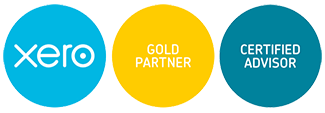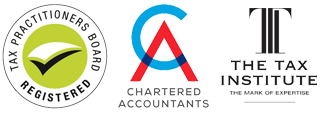ATO JOBKEEPER AUDIT TARGETS
ATO JOBKEEPER AUDIT TARGETS
The JobKeeper subsidy has progressed beyond the rush for eligibility and entered its second phase: compliance. Late last month, the Australian Taxation Office (ATO) released guidance highlighting where the regulator will focus its compliance resources.
The JobKeeper estimates error
Hindsight is a dangerous lens as Treasury discovered last month announcing that the number of employees expected to be covered by the JobKeeper scheme was overstated in the original announcement by approximately 3 million. The overstatement reflects “the level and impact of health restrictions not having been as severe as expected and their imposition not having been maintained for as long as expected at the time,” the Treasury statement says.
At the time of the Treasury estimates, not long after the country went into lockdown, we simply did not know what to expect. The first stimulus measures had been announced and long queues formed in front of Centrelink offices. Supermarket shelves were being stripped of essentials. Alarming daily global updates showed the virus spreading unimpeded in many parts of the world. China demonstrated the need for fast, severe and extended lockdowns to remove the possibility of community transmission. For Australia, there was no appetite to wait and see what might happen as other countries with devastating death rates did. We acted swiftly and we have reaped the benefits of that action with a low death rate, albeit at an economic cost. For many businesses, estimating the potential impact of the pandemic, the expectations were the same – fast, severe and extended. Now, with the JobKeeper scheme entering a compliance phase, we need to go back and point to the facts that supported the estimates declared to the ATO.
The ATO’s JobKeeper targets
The ATO is looking carefully at businesses that appear to have made adjustments to their circumstances to meet the JobKeeper eligibility requirements where, if those adjustments had not been made, the entity would have been ineligible or had lower JobKeeper payments. Or, where adjustments have been made to enable another entity or subcontractor to meet the decline in turnover test.
Industries or businesses that have not experienced adverse trading conditions and those that appear to have increased staff numbers are likely to be looked at closely. In its guidance, the ATO sets out a series of examples that are likely to attract their attention:
- Increase in staff – where the number of staff the business reports have increased beyond levels that were previously required to run the business prior to 1 March 2020.
- Deferring supplies – in industries unlikely to be adversely impacted by the pandemic, the business agrees with its customers to defer making supplies, resulting in the company’s projected GST turnover declining to the level required to meet the turnover test.
- Bringing forward supplies – in industries unlikely to be adversely impacted by the pandemic, the business brought forward supplies to be able to meet the decline in turnover test in a following month or quarter.
- Restructures – the example given by the ATO is a company that leases assets to third parties. The leasing business is generally unaffected by the pandemic. However, the business restructures and transfers the assets of the business to a new company. It then withholds the payment of dividends from the new company to the business resulting in a decline in the turnover of the business.
- Management fee manipulation – where inter-entity management fees are charged, the timing of the fee is changed to meet the decline in turnover test.
- Reduction in payments to subcontractors – where a business has reduced or deferred payments to subcontractors to enable them to meet the decline in turnover test. The ATO has stated that they will review the business and the subcontractors.
- JobKeeper used to reduce cost of supplies to customers – in this scenario, the business and its customers agree to reduce, waive or defer payments to enable the business to meet the decline in turnover test. JobKeeper is then used to fund the reduction in payments. In effect, JobKeeper is paying for the payment reduction.
Low risk scenarios
If your industry or business has been adversely impacted by the pandemic, regardless of your structure or arrangements, it is unlikely the ATO will review your situation unless there has been an obvious attempt to increase JobKeeper payments.
To add certainty, the ATO notes that where a service entity that employs staff for a related entity has reduced management fees, either because the service agreement has been changed to reduce the fee by an amount that is proportional to the reduction in the trading entity’s external turnover, staff have been stood down, or where the related entities cannot afford to pay the fee, and the industry is adversely impacted by the pandemic, the ATO will not generally seek to apply compliance resources.
What happens if you got it wrong?
If your structure or the way you have accessed JobKeeper is on the ATO target list, this does not mean that there is a problem.
Eligibility to JobKeeper is generally based on an estimate of the negative impact of the pandemic on an individual business’s turnover. Some will experience a greater decline than estimated while others will fall short of the required 30%, 50% or 15%. There is no clawback if you got it wrong as long as you can prove the basis for your eligibility going into the scheme.
For those that, in hindsight, did not meet the decline in turnover test, you need to ensure you have your paperwork ready to prove your position if the ATO requests it. You will need to show how you calculated the decline in turnover test and how you came to your assessment of your expected decline, for example, a trend of cancelled orders or trade conditions at that time.
Manage your JobKeeper compliance
Monthly declarations of your current and projected GST turnover are due within fourteen days of the end of each relevant month.
It’s important to ensure that you have paid eligible JobKeeper staff at least $1,500 during each JobKeeper fortnight. If you pay employees less frequently than fortnightly, the payment can be allocated between fortnights in a reasonable manner. For example, if you pay your employees on a monthly pay cycle, your employees must have received the monthly equivalent of $1,500 per fortnight.
For the first two JobKeeper fortnights (30 March-12 April, 13 April-26 April), employers had an extension until 8 May to make the JobKeeper payments to eligible employees. For the remaining JobKeeper fortnights, employees will need to receive at least $1,500 by the end of each JobKeeper fortnight or the monthly equivalent of $1,500 per fortnight. Depending on your pay cycle, this may require some adjustments each month.
If you have any concerns regarding your circumstances please contact your client manager on (02) 8543 6800 or email them directly.


